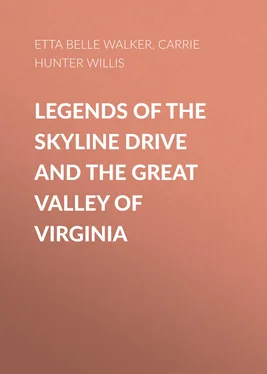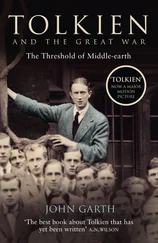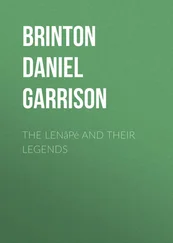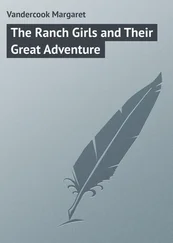Carrie Willis - Legends of the Skyline Drive and the Great Valley of Virginia
Здесь есть возможность читать онлайн «Carrie Willis - Legends of the Skyline Drive and the Great Valley of Virginia» — ознакомительный отрывок электронной книги совершенно бесплатно, а после прочтения отрывка купить полную версию. В некоторых случаях можно слушать аудио, скачать через торрент в формате fb2 и присутствует краткое содержание. Жанр: Путешествия и география, История, foreign_edu, foreign_antique, foreign_prose, на английском языке. Описание произведения, (предисловие) а так же отзывы посетителей доступны на портале библиотеки ЛибКат.
- Название:Legends of the Skyline Drive and the Great Valley of Virginia
- Автор:
- Жанр:
- Год:неизвестен
- ISBN:нет данных
- Рейтинг книги:3 / 5. Голосов: 1
-
Избранное:Добавить в избранное
- Отзывы:
-
Ваша оценка:
- 60
- 1
- 2
- 3
- 4
- 5
Legends of the Skyline Drive and the Great Valley of Virginia: краткое содержание, описание и аннотация
Предлагаем к чтению аннотацию, описание, краткое содержание или предисловие (зависит от того, что написал сам автор книги «Legends of the Skyline Drive and the Great Valley of Virginia»). Если вы не нашли необходимую информацию о книге — напишите в комментариях, мы постараемся отыскать её.
Legends of the Skyline Drive and the Great Valley of Virginia — читать онлайн ознакомительный отрывок
Ниже представлен текст книги, разбитый по страницам. Система сохранения места последней прочитанной страницы, позволяет с удобством читать онлайн бесплатно книгу «Legends of the Skyline Drive and the Great Valley of Virginia», без необходимости каждый раз заново искать на чём Вы остановились. Поставьте закладку, и сможете в любой момент перейти на страницу, на которой закончили чтение.
Интервал:
Закладка:
You would think Salling after this would have settled down and become a weaver again. But life was too tame. When Lewis asked him about the lands in the Valley, Salling decided to take him and the Englishman, John Mackay, who also wanted to go. Lewis found the country all that Salling had promised him and he decided to settle on a creek which bears his name today.
He obtained authority to 100,000 acres of land in and near the ground on which he built his fort-like house. Before very long, many of his friends and neighbors from Ireland were on their way to Virginia to join him. Many of them settled in Western Augusta near Fort Lewis. One can imagine how happy it made John Lewis to be told that the authorities, upon investigation, had granted him a pardon and absolved him from all blame in the killing of his landlord before he left Ireland. These Scotch-Irish, like their German neighbors, did not have very much trouble from the Indians for several years.
Thomas, a son of John Lewis, studied and went to represent his county in the House of Burgesses. He was a man of sound judgment and voted for Patrick Henry's celebrated resolutions.
Andrew, another son, was a soldier, and made his home in Botetourt County. During the Indian Wars, he was made a General but not until he had proved his worth in many a battle. He served with George Washington on July 4th, 1754 when Fort Necessity was taken, and he was present when the articles of the treaty were agreed upon. When Washington was made Commander-in-Chief, it is said he asked Lewis to accept the commission of brigadier-general. In 1776 he commanded the Virginians when Governor Dunnmore was driven from Gwynn's Island and we are told he gave the order for attacking the enemy and he himself lighted the match to the eighteen-pounder.
General Lewis resigned in 1780 and on his way home was taken ill with fever. He died near Bedford, about forty miles from home.
We cannot give all the accounts of William, Andrew and Charles, the other sons, but if one would read interesting captures and escapes from Indians, he will find that of Charles most exciting.
The sons of John and Margaret Lynn Lewis helped to develop the Valley of Virginia and their name is an honored one wherever it is found.
Indians
Early historians give us some accounts of the various Indians in Virginia. Opechancanough, a warrior chief from the East, went to war with Sherando, a member of the Iroquois tribe. Opechancanough in crossing the mountains on a foraging expedition was once attacked by Sherando who felt his tribe should not have to share its hunting grounds with anyone else and resented the invasion. A fierce battle took place, with no one victor.
Opechancanough liked the country, so when he returned to his town below Williamsburg on the Chickahominy, he left his son and a few warriors to watch the hunting grounds which he had found so rich in game. This son, Shee-wa-a-nee, with his band soon had to fight the main body of the Iroquois and Sherando drove the Chief east of the mountains.
Opechancanough left the lowlands as soon as the news was brought to him by runners. He gathered his warriors and set off with a large force. He fell upon Sherando and in the fierce battles which followed, he slowly drove him from his grounds, and he never returned from his home near the Great Lakes.
Sheewa-a-nee was left again in charge of the Hunting Grounds and from that day the Shawnees held the lovely Valley until the coming of the white settlers.
The settlers kept many of the Indian names for both mountains and streams. Opechancanough river was so called for the Great Chief. Legend and history tell us that in his later years he became blind and could no longer hunt in the lovely Shenandoah Valley.
There were many tribes of Indians in the country and though they did not all speak the same language, they did have a common tongue and could understand each other.
After 1710 all the lands west of the Blue Ridge Mountains were spoken of as Indian Country. The different tribes evidently had understanding among themselves about certain boundary lines as individual tribes had certain domains. When one violated these rights, there was a war in which whole tribes sometimes would be completely wiped out.
The Shawnees, the most powerful and warlike of all, claimed all the hunting grounds west of the Blue Ridge and as far west across the Alleghany as the Mississippi. They had three large towns in the Valley. One was near where Winchester stands today, one on the North River in Shenandoah County, and one on the South Branch, near where Moorefield is situated. They did allow other tribes to visit them in the Valley on condition they pay them tribute in skins or loot.
The next tribe was the Tuscaroras, and they spent most of their time in what is now West Virginia.
Another tribe was an offshoot from the Sherandos and were called Senedos. They were completely wiped out by the fierce tribe of Cherokees from the South, in 1732.
The Catawbas were from South Carolina and had their towns along the river which still bears that name.
The Delawares came from Pennsylvania and their villages were along the Susquehanna River. The Susquenoughs were a large and friendly tribe on the Chesapeake Bay and they were good to the white settlers until their enemies, the Cenela tribes, drove them away from Tidewater Virginia. Then they went to the upper Potomac River. The Cenelas soon followed them to the same region. Another tribe, the Piscataway, lived along the headwaters of the Chesapeake Bay.
The Cherokees had their villages on the Tennessee River down in the Carolinas and Georgia and Alabama. This tribe was made up of the nations of the South, the Muscogluges, the Seminoles, Chickasaws, Choctaws and Creeks. At certain times, all these Indians made forages into the Valley. Besides these there were those from New York—the Senecas, Mohawks, Oneidas, Onondagas and Cayugas. These were called the Five Nations and they too claimed the right to hunt in the Valley. These Indians believed, we are told, that the Great Spirit had given this Valley to all Indians and it is not surprising that they resented the coming of the white men who soon began to build homes, barns and fences and who claimed the right to shoot the Indians if they came on their property.
Then the French about this time began to build forts along the St. Lawrence River, the Great Lakes and on down the Mississippi River to the Gulf of Mexico. The French made every effort to make friends with the Indians and told them the British had no right to take their lands. The French said they would protect their rights if the Indians would let them. Consequently, they became allies of the French and they began to move their villages and towns toward the French lines. They continued to keep a part of their homes and to send back bands of hunters to look after the hunting grounds beyond the mountains.
If the Indians had not been friendly to those pioneers who dared to build homes in the Valley, there would not have been any civilization there until a much later date. But as we have seen, many of them came from Pennsylvania where William Penn and his colonists had dealt so fairly with the Indians. Naturally then, the Indians thought all the settlers would be like those. Besides, there were so few of them, they did not at first realize that their hunting grounds were being taken from them. Consequently, the Delawares and Catawbas in hunting did no harm, though they were bitter enemies and the settlers often saw them with prisoners from the other tribes.
There were Indian villages on the Potomac and on both branches of the Shenandoah. Numerous Indian mounds and graves are still to be seen in certain sections of the Valley. Many of these have been opened and skeletons found to be in a wonderful state of preservation; utensils, pipes, axes, tomahawks, pots and hominy pestles have been found. Their pots and utensils were made of a mixture of clay and hard shells, very crude as to workmanship but very strong.
Читать дальшеИнтервал:
Закладка:
Похожие книги на «Legends of the Skyline Drive and the Great Valley of Virginia»
Представляем Вашему вниманию похожие книги на «Legends of the Skyline Drive and the Great Valley of Virginia» списком для выбора. Мы отобрали схожую по названию и смыслу литературу в надежде предоставить читателям больше вариантов отыскать новые, интересные, ещё непрочитанные произведения.
Обсуждение, отзывы о книге «Legends of the Skyline Drive and the Great Valley of Virginia» и просто собственные мнения читателей. Оставьте ваши комментарии, напишите, что Вы думаете о произведении, его смысле или главных героях. Укажите что конкретно понравилось, а что нет, и почему Вы так считаете.












